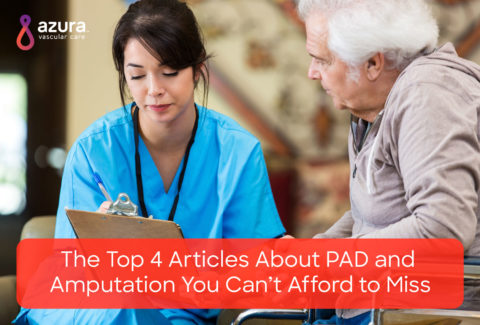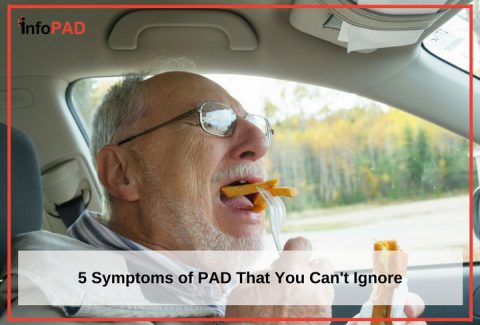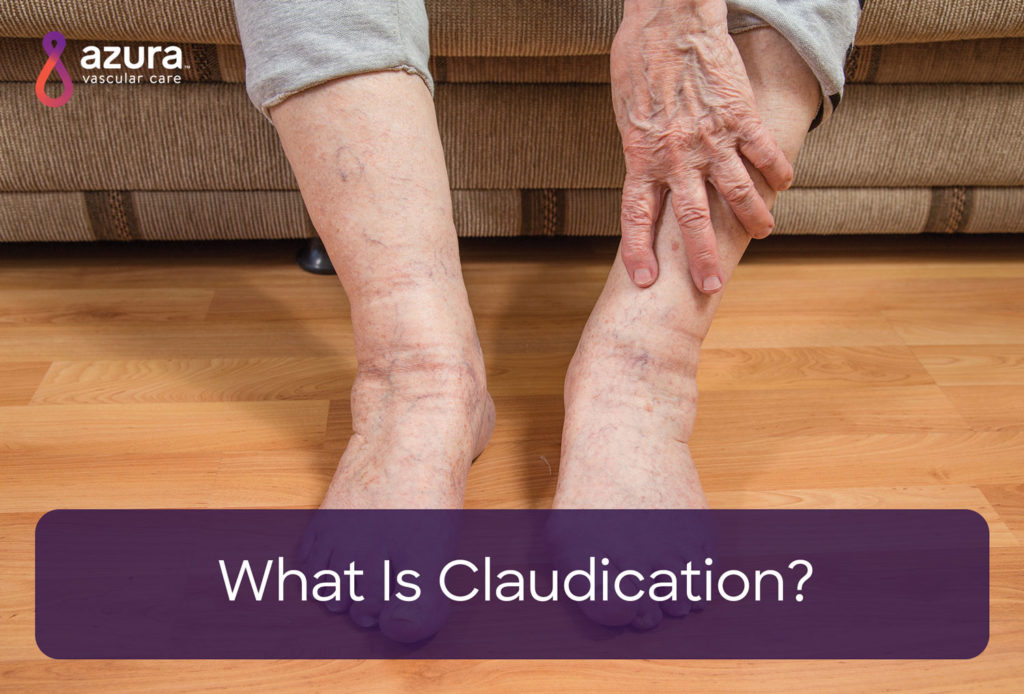
Perhaps you’ve heard this term used in your last visit to your doctor, and wondered “what is claudication?” and whether it puts you at risk for long-term problems. Learning about claudication and what is causing it can put you in control of your care.
So, What Is Claudication?
Claudication, sometimes called intermittent claudication, is pain that is caused by reduced blood flow to your legs. It can also occur in your arms. It’s important to remember that claudication itself is not a disease. Rather, it’s a symptom of a disease.
Pain from claudication is usually brought on during exercise, and typically, stopping to rest will resolve the discomfort. But as claudication progresses, it can sometimes cause pain even when at rest.
What Causes Claudication?
People who have claudication usually have an underlying medical condition that is causing it. Most often claudication is a symptom of peripheral artery disease (PAD), which is caused by atherosclerosis, a hardening of the arteries in your legs and/or arms.
With atherosclerosis, your arteries narrow and stiffen as they become clogged with plaque. And as they narrow, less blood can flow through the vessels. This narrowing prevents your leg and/or arm muscles from getting enough oxygen, which results in the pain experienced from claudication.1 While serious, peripheral artery disease can be treated when detected early. Treatment will often alleviate or reduce pain from claudication.
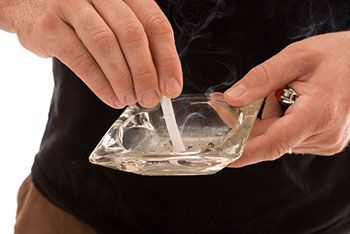
Risk Factors for Claudication 1
- Smoking
- High cholesterol
- High blood pressure
- Obesity (a body mass index over 30)
- Diabetes
- Age older than 70 years
- Age older than 50 years if you also smoke or have diabetes
- A family history of atherosclerosis, peripheral artery disease or claudication
Claudication Diagnosis
Based on your physical exam, symptoms, and your medical history, your doctor may suspect that your arteries have narrowed and can perform non invasive tests to diagnose claudication.
Some common tests for claudication include:
- Checking the pulses in your feet
- Ankle-brachial index (ABI) – compares the blood pressure in your ankles with the blood pressure in your arms.
- Doppler ultrasound – measures the amount of blood flow in the affected area.
- Magnetic resonance imaging (MRI) or computerized tomography (CT) angiography – maps the blood flow in the affected area and shows if blood vessels are narrowed with plaque.
- Pulse volume recording (PVR) – checks the blood flow in your legs.
Treatment for Claudication
Claudication caused by PAD can often be treated through lifestyle changes, such as quitting smoking and starting a regular exercise program. Sometimes modifying your lifestyle is all that is needed to alleviate the pain from claudication and slow or stop the progression of PAD.
When lifestyle changes are not enough, there are three minimally invasive procedures that can be done to treat PAD that will also lessen or ease the pain brought on by claudication.
1. Angioplasty – In this procedure, a small balloon catheter will be used to open your narrowed or blocked artery. When the balloon is inflated, it pushes the plaque against the artery wall. By widening the artery in this manner, the flow of blood through your artery is increased.
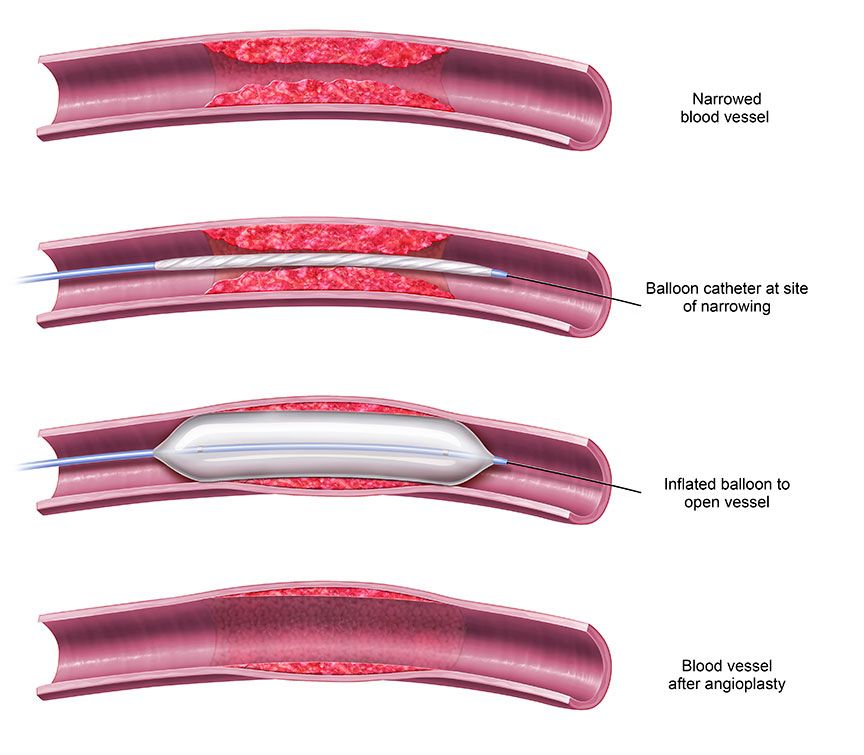
2. Atherectomy – During this procedure, a special device will scrape, shave or vaporize the plaque from your artery walls.
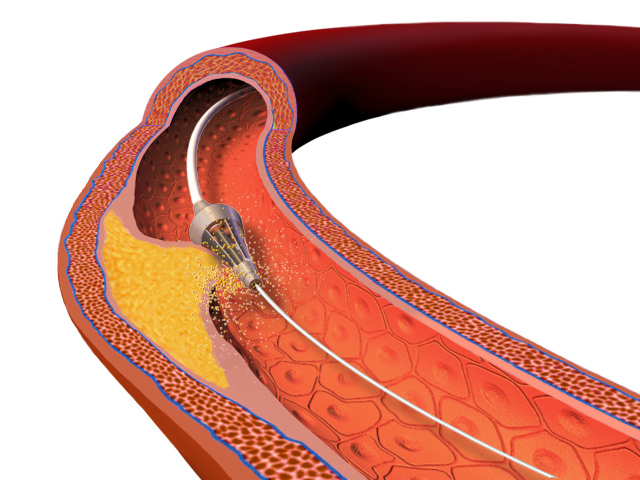
3. Stent placement – If angioplasty alone is not sufficient to keep the affected artery open, a stent, which is a flexible, wire-mesh tube, may be placed during the angioplasty procedure to hold the artery open.
Preventing Claudication Caused by PAD
A healthy lifestyle can help prevent claudication. Here are some lifestyle changes that can help prevent PAD and the resulting claudication:
- Maintain a healthy weight for your height and age.
- Monitor—and reduce, if needed—your intake of saturated fats.
- Keep your blood sugar at optimal levels if you are living with diabetes.
- Participate in a regular exercise program.
- Lower your cholesterol if it’s above normal.
- Lower your blood pressure if you have hypertension. 1
- Quit smoking.
The pain experienced as a result of claudication and PAD can be life-altering for some people. But with effective lifestyle changes, and medical interventions when necessary, you can find relief.
If you’re living with PAD or have pain from claudication, ask your doctor today about which treatment option is best for you.
Sources:
i Mayo Clinic. Diseases and Conditions: Claudication. Retrieved from: http://www.mayoclinic.org/diseases-conditions/claudication/basics/symptoms/con-20033581
ii Mayo Clinic. Diseases and Conditions: Claudication. Retrieved from: https://www.mayoclinic.org/diseases-conditions/claudication/diagnosis-treatment/drc-20370959
